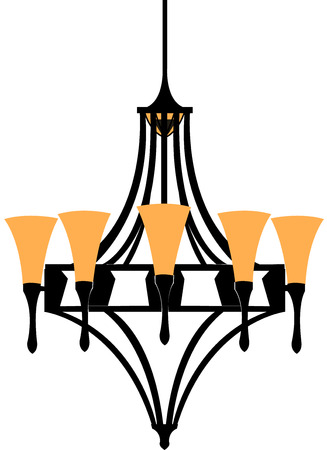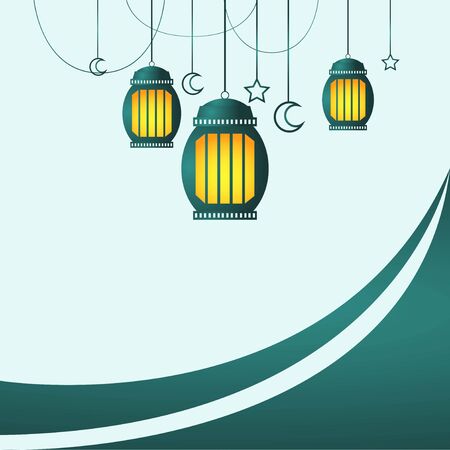Introduction: Illuminating Indian Homes
India is a land of vibrant traditions and timeless heritage, where every home tells a unique story through its design and decor. Lighting, in particular, plays an essential role in Indian households, from the soft glow of diyas during Diwali to the ornate chandeliers in ancestral havelis. Over generations, traditional lighting methods have been deeply interwoven with religious rituals, festive celebrations, and everyday life. However, as urbanisation and technological advancements sweep across the nation, Indian homes are embracing a new era of smart living. LED lights—celebrated for their energy efficiency and modern appeal—are making significant inroads into both urban apartments and rural dwellings. This transition is not just about adopting new technology; it’s about harmoniously blending the convenience and sustainability of smart solutions with the warmth and cultural richness that define Indian interiors. In this article, we explore how LED lighting is transforming Indian homes, while still honouring age-old customs and aesthetics.
2. Traditional Indian Lighting: Deep Roots and Customs
Lighting in India is not just about illumination—it is deeply woven into the cultural, spiritual, and social fabric of everyday life. From the gentle glow of diyas (oil lamps) to the vibrant patterns of lanterns and the familiar brightness of tube lights, traditional lighting methods have a unique place in Indian homes. These forms of lighting are more than functional; they symbolize hope, purity, and celebration.
The Cultural Significance of Diyas and Lanterns
Diyas hold a sacred role in Indian households, especially during festivals like Diwali, where lighting dozens of them signifies the triumph of light over darkness and good over evil. Lanterns made from paper or metal are commonly used during festive occasions such as Navratri and Eid, enhancing the ambience with their intricate designs and warm light. Each type of lighting carries its own meaning—diyas for spirituality, lanterns for festivity, and tube lights for daily routines.
Role in Festivals and Rituals
| Lighting Type | Main Usage | Cultural Context | Typical Occasions |
|---|---|---|---|
| Diyas (Oil Lamps) | Symbolic Illumination | Spiritual & Ritual Purity | Diwali, Pujas, Weddings |
| Lanterns | Decorative Lighting | Festive Ambience | Navratri, Eid, Family Gatherings |
| Tube Lights | Practical Brightness | Everyday Use & Modern Adaptation | Daily Life, Large Gatherings |
The Everyday Presence of Traditional Lighting
Beyond special occasions, traditional lighting remains central to everyday Indian life. Diyas are lit at dawn or dusk as part of daily prayers (aarti), while tube lights brighten living rooms and kitchens across cities and villages alike. Lanterns often decorate balconies or courtyards, blending functionality with heritage aesthetics. This integration ensures that even as modern technology advances, the emotional connection with traditional lighting continues to shape the Indian home experience.

3. LED Lights: The Smart Switch
In the rapidly evolving landscape of smart homes in India, LED lighting has emerged as a transformative solution that blends technology with the unique needs of Indian households. Modern Indian families, whether living in metropolitan cities like Mumbai and Bengaluru or in rural heartlands, are increasingly turning to LED lights for their remarkable benefits.
Energy Efficiency: A Sustainable Choice
LED lights are celebrated for their energy efficiency—a crucial factor in a country where power consumption and electricity costs are significant concerns. By consuming up to 80% less electricity compared to traditional incandescent bulbs, LEDs help Indian homes reduce their carbon footprint and monthly electricity bills. This eco-friendly approach aligns well with India’s growing focus on sustainability and environmental responsibility.
Cost Savings That Matter
For most Indian families, cost-effectiveness is key when adopting new technologies. While the initial investment in LED lighting may be slightly higher than conventional options, the long-term savings on energy bills and lower maintenance costs make LEDs a wise choice. Their extended lifespan means fewer replacements, reducing hassle and expenses—whether it’s a city apartment or a rural haveli.
Smart Controls: Convenience at Your Fingertips
The integration of smart controls with LED lights brings unparalleled convenience to Indian homes. With features like remote operation via smartphones, voice assistants (such as Alexa or Google Assistant), and automated scheduling, homeowners can easily manage their lighting according to daily routines or cultural practices like Diwali festivities and family gatherings. Customisable brightness and colour settings also allow for mood lighting during poojas or celebrations, blending modernity with tradition.
Suitability for Urban & Rural Settings
LED lighting’s versatility makes it suitable for diverse Indian settings. In urban apartments where space is limited and aesthetics matter, sleek LED fixtures enhance décor while saving energy. In rural areas prone to power cuts, LED bulbs paired with solar panels or inverters ensure reliable illumination without straining local resources. Their durability withstands voltage fluctuations common in many parts of India, making them a practical solution nationwide.
Blending Modern Technology with Indian Aesthetics
In today’s Indian homes, the fusion of advanced LED lighting technology with the country’s rich cultural heritage is not just a trend—it’s an art form. Homeowners and interior designers across India are innovatively blending modern smart lighting solutions with traditional Indian designs, ensuring that homes maintain their unique cultural charm while reaping the benefits of energy efficiency and convenience. This approach allows families to celebrate their roots without compromising on the comforts of contemporary living.
Indian-Inspired Lighting Designs
One of the most significant ways this blend is achieved is through the thoughtful selection of lighting fixtures and colours. Instead of opting for plain or industrial looks, many choose LED chandeliers, pendant lights, and wall sconces inspired by classic jharokha patterns, Mughal motifs, or temple architecture. These fixtures often feature intricate carvings, brass finishes, or coloured glass elements that echo traditional Indian aesthetics.
Popular Colour Schemes & Décor Pairings
| LED Lighting Colour | Traditional Décor Element | Cultural Influence |
|---|---|---|
| Warm White/Amber | Hand-painted terracotta lamps, wooden carvings | South Indian & Rajasthani homes |
| Royal Blue/Purple Hues | Zari-embroidered drapes, silk cushions | Mughal & North Indian palaces |
| Vibrant Red/Gold Tones | Brocade runners, brass artefacts | Bengali & Marwari traditions |
| Soft Pink/Peach Glow | Pichwai paintings, floral Rangoli designs | Gujarati & festival décor |
Smart Controls Meet Traditional Spaces
The integration doesn’t stop at design—smart home systems allow residents to adjust the brightness and colour temperature to suit different occasions such as Diwali pujas, family gatherings, or quiet evenings. For example, programmable LED strips can highlight antique wooden mandirs or accentuate wall murals depicting mythological scenes. Voice-controlled lighting enables seamless transitions between festive brilliance and everyday calm, all while preserving the soul of Indian interiors.
This thoughtful synergy of technology and tradition ensures that smart homes in India are not only efficient but also feel deeply personal and culturally resonant.
5. Challenges and Solutions: Indian Realities
When it comes to embracing smart homes and modern LED lighting in India, unique challenges rooted in our local realities must be considered. Let’s explore these issues and practical solutions so every Indian household can enjoy the benefits of modern technology while retaining cultural comfort.
Voltage Fluctuations: A Common Concern
In many parts of India, frequent power cuts and voltage fluctuations are an everyday affair. These conditions can damage both traditional lighting and sensitive LED fixtures, reducing their lifespan and efficiency.
Solution: Smart Stabilizers & Surge Protectors
Investing in voltage stabilizers or surge protectors designed for Indian grids is essential. Many smart home brands now offer integrated protection features that automatically adjust to fluctuating currents, keeping your LEDs safe and shining bright through Diwali nights or monsoon storms.
Affordability: Making Modern Lighting Accessible
The upfront cost of smart LEDs may seem high compared to traditional bulbs, which can deter middle-class families or those in rural areas from upgrading.
Solution: Government Schemes & Bulk Buying
The Indian government’s UJALA scheme and similar initiatives have made energy-efficient bulbs more affordable than ever. Additionally, buying LEDs in bulk for housing societies or during festival sales can bring down costs. Over time, the savings on electricity bills easily offset the initial investment—a true paisa vasool solution.
Awareness: Bridging the Knowledge Gap
Many Indians still associate smart lighting with luxury or complex technology, leading to hesitation in adoption—especially among elders who are accustomed to traditional tube lights and lanterns.
Solution: Community Demonstrations & Simple Controls
Local workshops, WhatsApp videos in regional languages, and hands-on demos at neighbourhood events can demystify smart lighting. Today’s LED systems also feature user-friendly remotes or voice controls (compatible with Alexa and Google Assistant), making them as easy as flicking a regular switch—no English degree needed!
Towards a Brighter, Smarter Future
By addressing these uniquely Indian challenges with practical solutions, every home—from urban flats in Mumbai to ancestral havelis in Rajasthan—can blend tradition with innovation. With the right approach, the journey towards smarter living truly becomes “ghar ka mamla”—personal, practical, and proudly Indian.
6. Choosing the Right Fit: Practical Advice for Indian Homes
When it comes to lighting your home, every Indian family faces a unique blend of tradition and modernity. Whether you live in a bustling Mumbai flat or a heritage bungalow in Jaipur, selecting between traditional and LED lighting solutions requires careful thought. Here are some practical tips and considerations to help you make the right choice for your home, keeping Indian preferences and festivities in mind.
Understand Your Family’s Lifestyle & Lighting Needs
Start by assessing how each space is used—do you need bright lights for studying or softer glows for pooja rooms? In many Indian homes, areas like the kitchen and study benefit from energy-efficient LED panels, while living spaces and prayer corners may call for the warm ambiance of traditional lamps or diyas, especially during festivals like Diwali.
Blend Tradition with Technology
Indian heritage values aesthetics and symbolism. Consider mixing LED solutions with classic fixtures—for example, use LED bulbs inside antique lanterns or pair strip lights with brass urulis filled with flowers. This approach honours tradition while enjoying the cost savings and convenience of smart lighting systems.
Think About Festivals & Special Occasions
No Indian home is complete without festive celebrations. During Diwali, Navratri, or Eid, traditional oil lamps create unmatched spiritual ambiance. However, supplementing them with programmable LEDs adds colour and flair while reducing fire risks—perfect for apartments where open flames may not be allowed.
Energy Efficiency vs. Emotional Value
While LEDs save on electricity bills—a major consideration as power costs rise—some families cherish the ritual of lighting clay diyas or decorative chandeliers handed down through generations. Striking a balance between sustainability and emotional value ensures everyone feels at home.
Practical Tips:
- Opt for dimmable LEDs in living rooms for versatility during gatherings or quiet evenings.
- Use traditional lamps for special rituals but switch to LEDs for daily routines to minimise maintenance.
- Select warm white LED options to mimic the cosy glow of incandescent bulbs, preferred in many Indian households.
Adapt to Local Climate & Power Conditions
Given India’s varied climates and occasional power cuts, choose LED lights compatible with inverters or solar backups. Traditional lamps can serve as reliable backups during outages.
Conclusion: Creating a Harmonious Home
The ideal Indian smart home seamlessly blends new technology with cultural heritage. By thoughtfully combining LED innovations and time-honoured lighting traditions, families can create comfortable, energy-efficient spaces that respect both modern needs and ancestral values—all year round.
7. Conclusion: Lighting Up the Future While Honouring Heritage
As India moves towards a smarter, more energy-efficient future, the adoption of LED lighting in smart homes is becoming increasingly popular. LEDs offer significant advantages—reduced electricity bills, longer lifespan, low maintenance, and seamless integration with home automation systems. They are eco-friendly and align well with government initiatives like UJALA, which promote sustainability and digital transformation across urban and rural India.
However, as we embrace these technological advancements, it is essential to remember the profound cultural significance that traditional lighting holds in Indian society. From the warm glow of diyas during Diwali to the ornate chandeliers in heritage havelis, lighting has always played a pivotal role in expressing hospitality, spirituality, and celebration.
The true spirit of modern Indian homes lies in blending cutting-edge LED technology with timeless traditions. Smart home owners can incorporate colour-changing LEDs to mimic the golden hues of oil lamps or use programmable settings to recreate festive ambiences during special occasions. By respecting these age-old customs and integrating them with modern solutions, we create living spaces that are both technologically advanced and deeply rooted in Indian values.
Lighting up our homes should not mean letting go of our heritage. Instead, let us use innovation to enhance our traditions—making every home in India a shining example of how the past and future can beautifully coexist.

